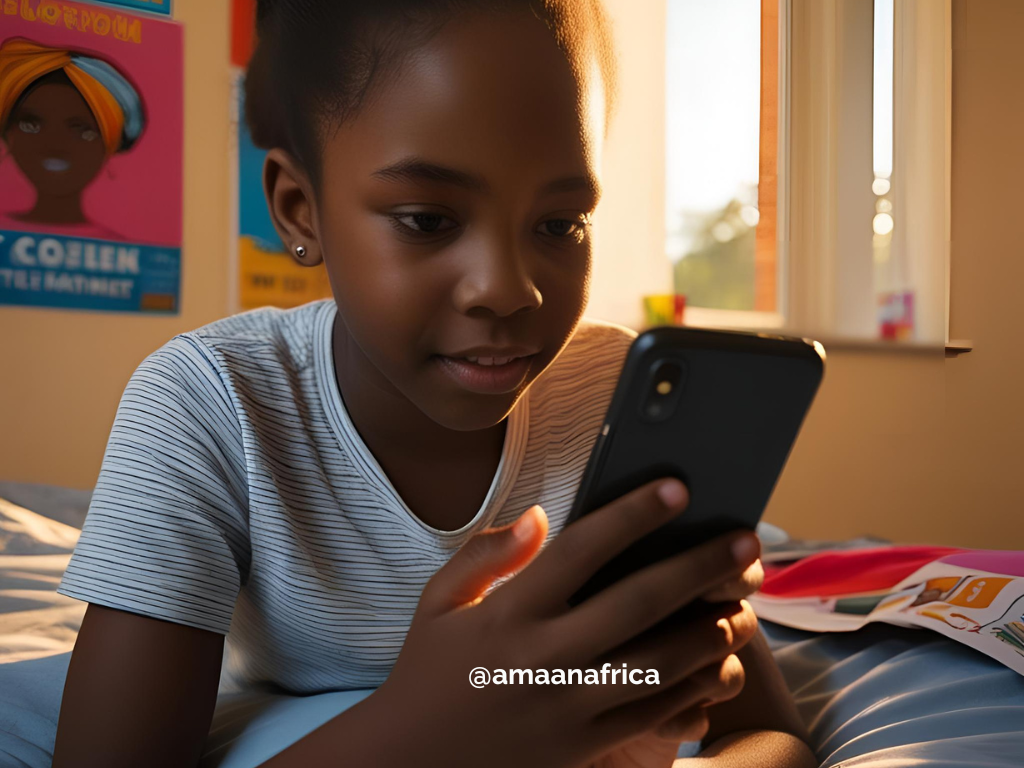
INTRODUCTION
In today’s digital era, the omnipresence of internet-enabled devices has led to unprecedented access to online content, including pornography. This widespread availability has profound implications for youth, particularly concerning their understanding of consent and sexual behavior. Delving deeper into this issue reveals nuanced insights that are essential for stakeholders aiming to foster healthy development among young individuals.
Young people are increasingly exposed to pornography at a young age, shaping their perceptions of sex, relationships, and consent. This blog explores the complex links between pornography, consent, and youth sexual behavior, highlighting research findings from Africa and beyond. As we navigate this sensitive issue, it becomes crucial for parents, educators, and policymakers to address its impact and equip young individuals with the knowledge they need to make informed decisions about their sexuality and relationships.
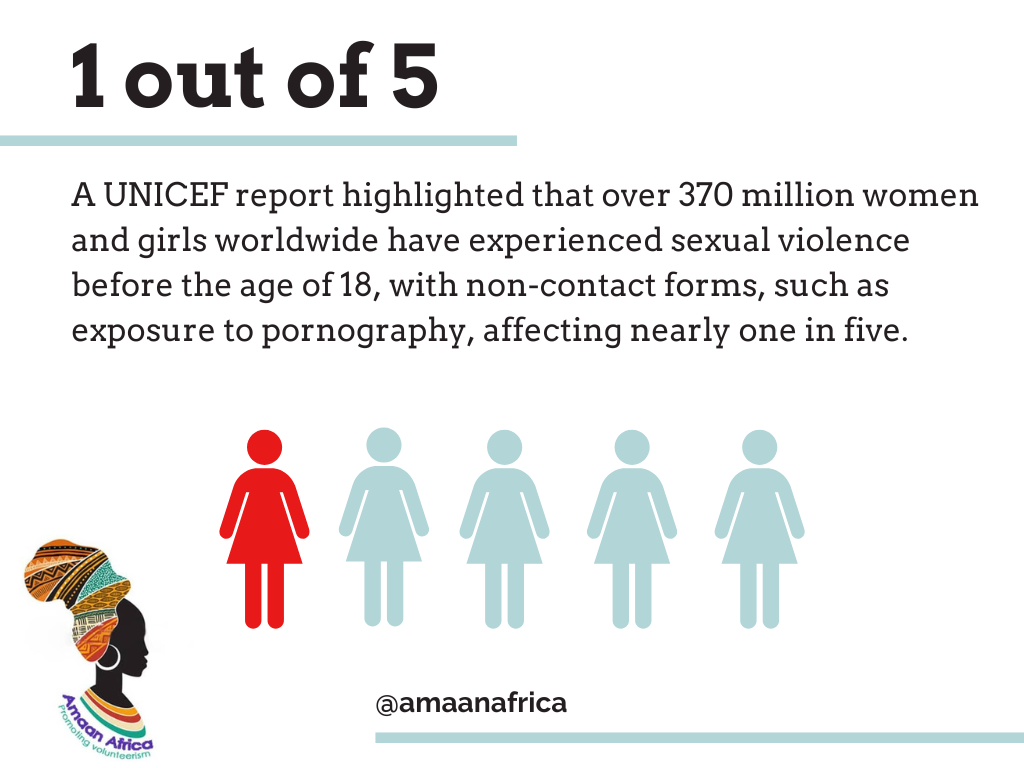
Pornography refers to sexually explicit material intended to arouse sexual excitement. It can take many forms, including images, videos, and written content while Consent is a voluntary, enthusiastic agreement to engage in sexual activity. It is not silence, passivity, or the absence of “NO.” Key characteristics of consent include:
- Affirmative: Consent must be clearly and actively given.
- Reversible: Anyone can change their mind and withdraw consent at any time.
- Informed: Individuals must have a clear understanding of what they are consenting to.
- Enthusiastic: Consent should be freely and eagerly given, not coerced or pressured.
- Specific: Consent to one sexual act does not imply consent to others.
Early Exposure and Its Implications
Research indicates that children are encountering explicit content at increasingly younger ages. A UNICEF report highlighted that over 370 million women and girls worldwide have experienced sexual violence before the age of 18, with non-contact forms, such as exposure to pornography, affecting nearly one in five. This early exposure can shape perceptions of sexuality and consent, often before adolescents have the maturity to process such information critically which can lead to;
- Earlier Sexual Initiation: Exposure to pornography may contribute to younger ages of first sexual intercourse.
- Increased Sexual Risk-Taking: Higher rates of unprotected sex or multiple partners.
- Acceptance of Sexual Violence: Greater tolerance for or belief in myths about sexual assault.
- Distorted Body Image: Unrealistic expectations about physical appearance and sexual performance.
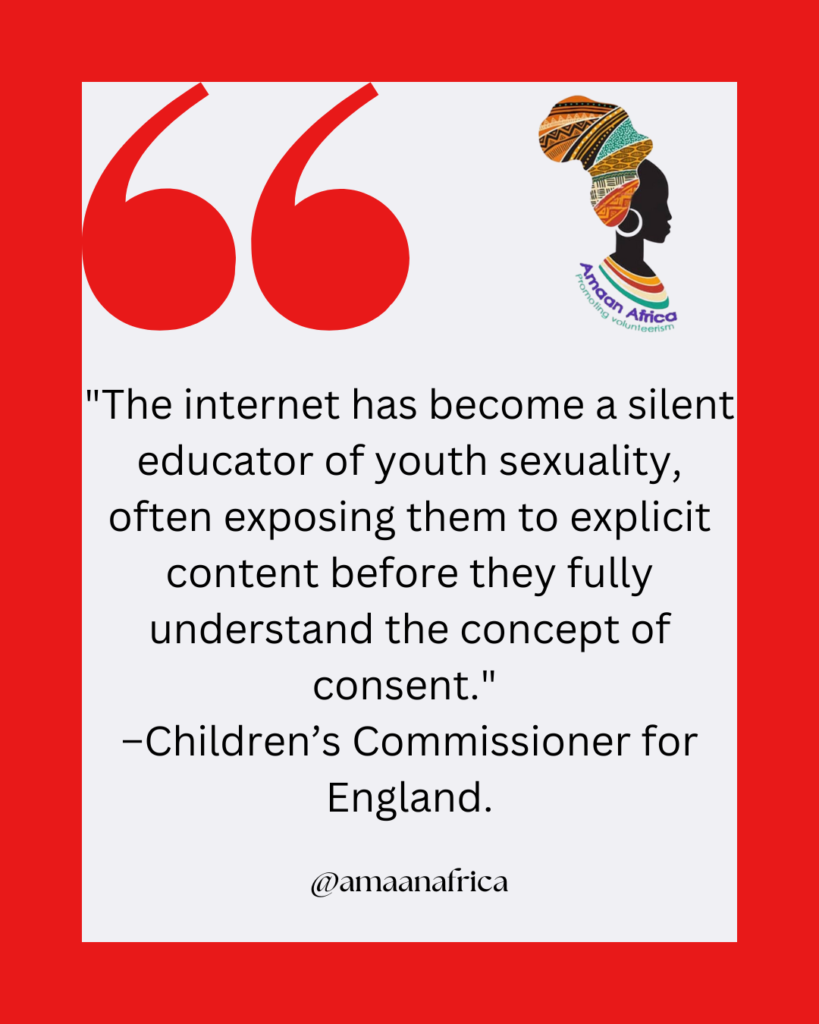
Influence on Sexual Behavior
The consumption of pornography during formative years can significantly influence adolescents’ sexual behaviors and attitudes. A study among undergraduate students in Benue State University, Nigeria, revealed that exposure to internet pornography often began as early as 10 years old. Notably, 88% of those exposed practiced behaviors they had watched, with 71.4% becoming addicted to sex and 56.4% recording and sharing explicit content. These behaviors underscore the profound impact of early and unmoderated exposure to explicit material.
Similarly, research from Hawassa University in Ethiopia found that students frequently exposed to pornography were more likely to engage in risky sexual behaviors, such as having multiple sexual partners and inconsistent condom use. The study emphasized that the frequency and intentionality of exposure were significant predictors of such behaviors.
Distorted Perceptions of Consent
Pornography often portrays unrealistic and non-consensual sexual scenarios, which can distort young viewers’ understanding of consent. A study in Ibadan, Nigeria, observed that 72% of young persons had stumbled upon pornographic sites, with reactions ranging from curiosity to emulation. Post-exposure behaviors included engagement in oral sex (48.3%), having multiple sexual partners (11.6%), and even homosexuality (5.0%). These findings suggest that exposure can lead to the normalization of behaviors without a foundational understanding of mutual consent.
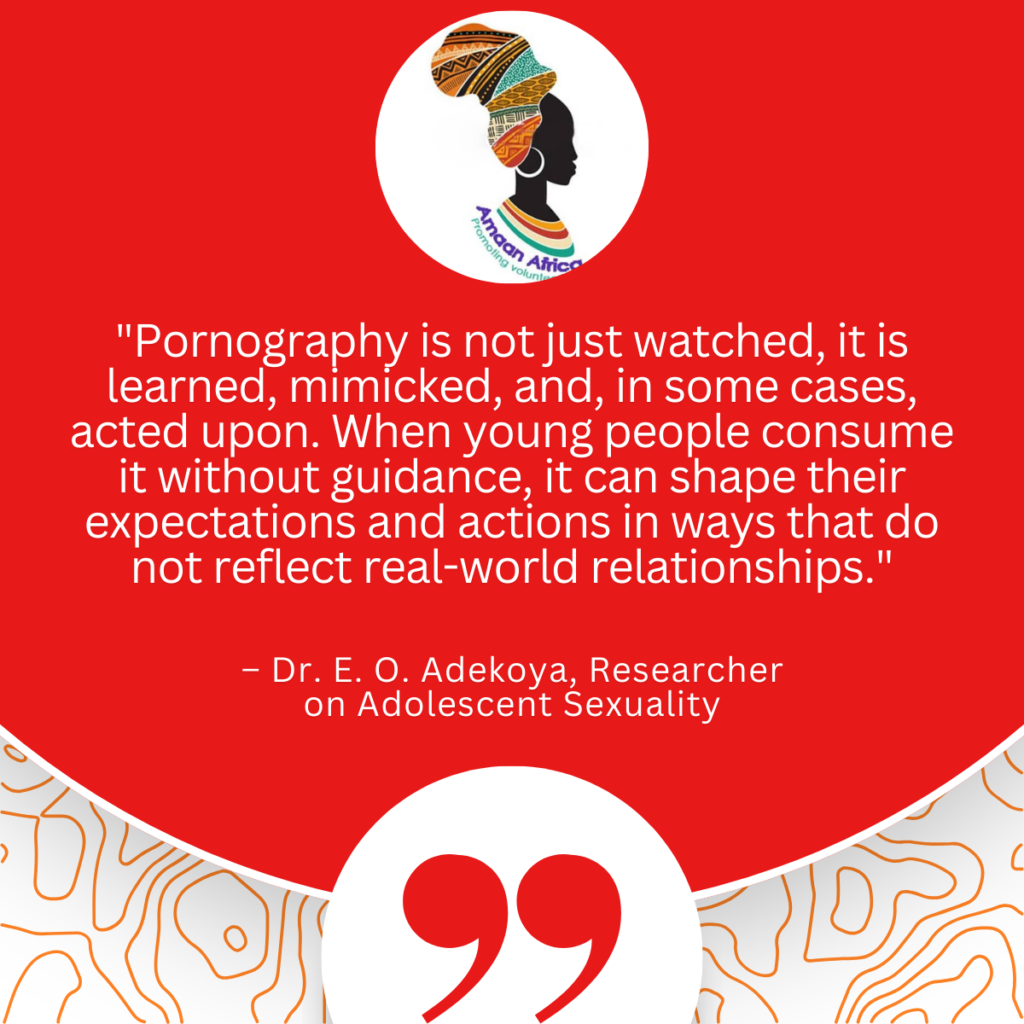
Cultural and Legal Context in Africa
The African continent presents a diverse cultural and legal landscape concerning pornography. While many countries have laws prohibiting the production, distribution, and consumption of explicit material, enforcement remains inconsistent. The rapid proliferation of internet access has further complicated regulatory efforts. For instance, in Ghana, a study found that pornography is a leading influence on sexual behavior among the youth, with 90% of respondents satisfactorily knowledgeable about reproductive health but only 39% of the sexually active having ever used contraceptives. This highlights a gap between knowledge and practice, exacerbated by unregulated exposure to explicit content.
Youth Sexual Behavior and Sustainability
The relationship between youth sexual behavior and sustainability involves considering the long-term impacts of sexual decisions on individuals, communities, and the environment.
Individual Well-being
- Physical Health: Preventing sexually transmitted infections and unintended pregnancies.
- Mental Health: Promoting positive self-esteem, healthy relationships, and emotional well-being.
- Social Well-being: Fostering respectful and equitable relationships based on consent and mutual understanding.
Community Impact
- Public Health: Reducing the burden of STIs and promoting reproductive health services.
- Social Cohesion: Building communities that value respect, equality, and non-violence.
- Economic Development: Supporting education and opportunities for young people to reach their full potential.
Environmental Sustainability
- Population Growth: Addressing the impact of population growth on resource availability and environmental degradation.
- Resource Consumption: Promoting responsible consumption patterns and sustainable lifestyles.
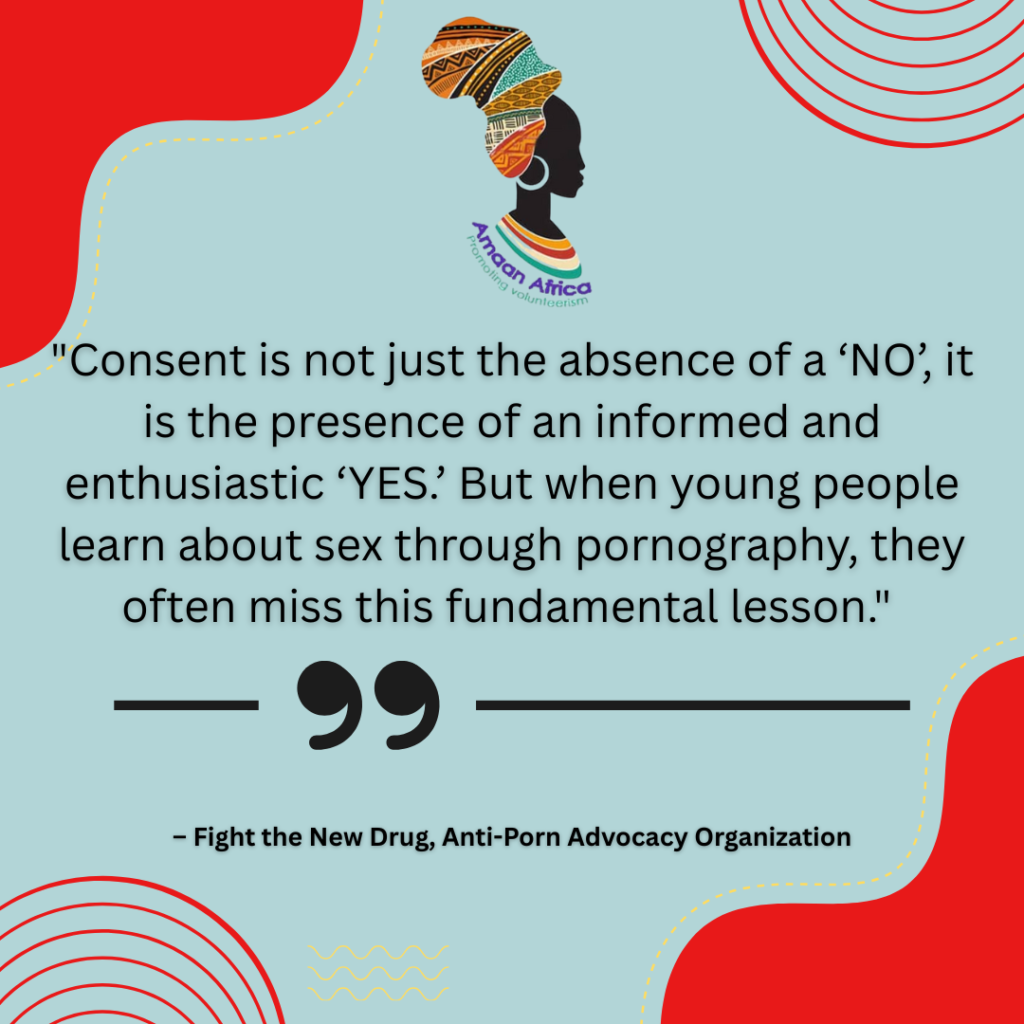
Several Sustainable Development Goals (SDGs) are closely linked to the issues of pornography, consent, and youth sexual behavior.
SDG 3: Good Health and Well-being
- Target 3.7: By 2030, ensure universal access to sexual and reproductive health-care services, including family planning, information and education, and the integration of reproductive health into national strategies and programmes.
- Connection: Addressing the harmful effects of pornography and promoting healthy sexual education are vital for achieving this target.
SDG 4: Quality Education
- Target 4.7: By 2030, ensure that all learners acquire the knowledge and skills needed to promote sustainable development, including, among others, through education for sustainable development and sustainable lifestyles, human rights, gender equality, promotion of a culture of peace and non-violence, global citizenship and appreciation of cultural diversity and of culture’s contribution to sustainable development.
- Connection: Comprehensive sexuality education that addresses consent, healthy relationships, and the impact of pornography is essential for achieving this target.
SDG 5: Gender Equality
- Target 5.2: Eliminate all forms of violence against all women and girls in the public and private spheres, including trafficking and sexual and other types of exploitation.
- Connection: Pornography often perpetuates harmful gender stereotypes and can contribute to the normalization of sexual violence and exploitation.
SDG 16: Peace, Justice, and Strong Institutions
- Target 16.2: End abuse, exploitation, trafficking and all forms of violence against and torture of children.
- Connection: Protecting children from harmful online content, including pornography, is crucial for achieving this target.
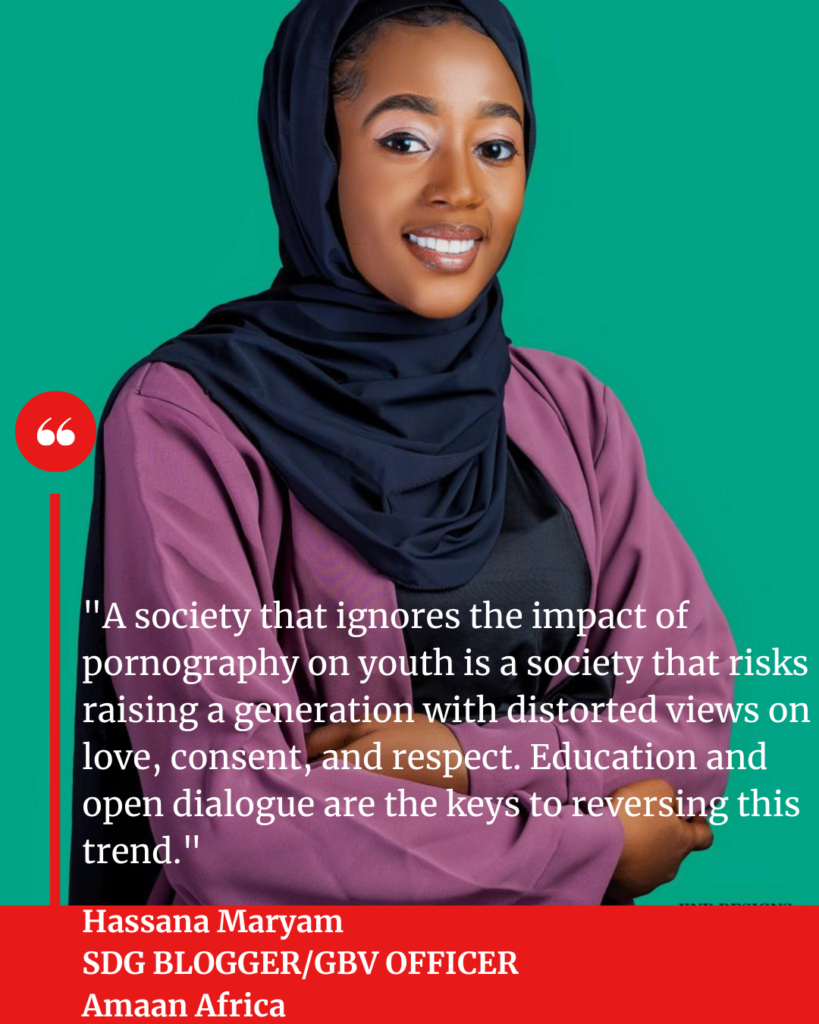
Recommendations for Stakeholders
1. Comprehensive Sexual Education: Implement age-appropriate programs that address the realities of pornography, emphasizing the importance of consent, respect, and healthy relationships.
2. Parental Involvement: Encourage open dialogues between parents and children about online content, setting clear boundaries, and discussing the potential harms of pornography.
3. Policy Enforcement: Strengthen and enforce laws regulating the distribution and access to explicit material, ensuring they are updated to address digital platforms.
4. Community Engagement: Mobilize community leaders and organizations to raise awareness about the impact of pornography on youth and promote positive behavioral models.
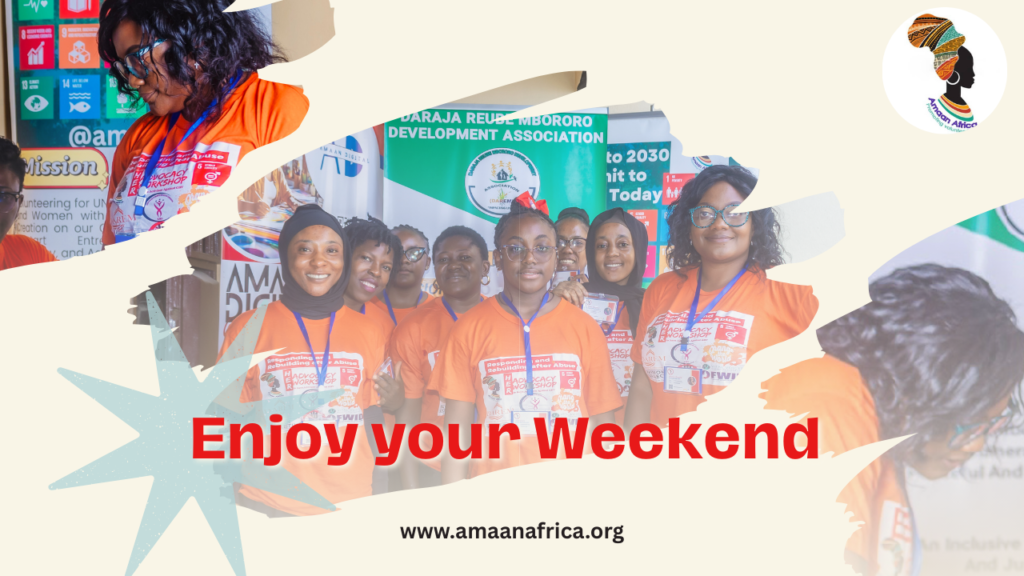
The following Security measures and tips that can help young people from accessing pornographic sites while browsing:
Technical Measures
- Use Parental Control Software: Install parental control software that allows you to filter content, block specific websites, and monitor online activity.
- Enable Safe Search: Turn on Safe Search settings in search engines like Google, Bing, and YouTube to filter out explicit content.
- Configure Router Settings: Some routers allow you to block specific websites or content categories at the network level.
- Use a Child-Friendly Browser: Consider using a browser specifically designed for children that has built-in content filters and restrictions.
- Implement DNS Filtering: Use a DNS service that filters out inappropriate content and provides website blocking capabilities.
Practical Tips
- Open Communication: Talk to children about online safety, the dangers of pornography, and the importance of making responsible choices.
- Set Clear Rules and Expectations: Establish clear rules about internet usage, including what websites are allowed and what activities are prohibited.
- Monitor Online Activity: Keep an eye on what children are doing online, either by periodically checking their browsing history or using monitoring software.
- Keep Devices in Common Areas: Place computers and other internet-connected devices in common areas of the house, rather than in children’s bedrooms.
- Educate on Privacy: Teach children not to share personal information online and to be cautious about clicking on links or downloading files from unknown sources.
- Regularly Update Software: Keep operating systems, browsers, and security software up to date to patch vulnerabilities and enhance protection.
- Lead by Example: Model responsible online behavior and demonstrate healthy internet habits.
- Use Browser Extensions: Install browser extensions that block adult content and provide warnings about potentially harmful websites.
- Create Separate User Accounts: Set up separate user accounts on devices for children with restricted access and parental controls enabled.
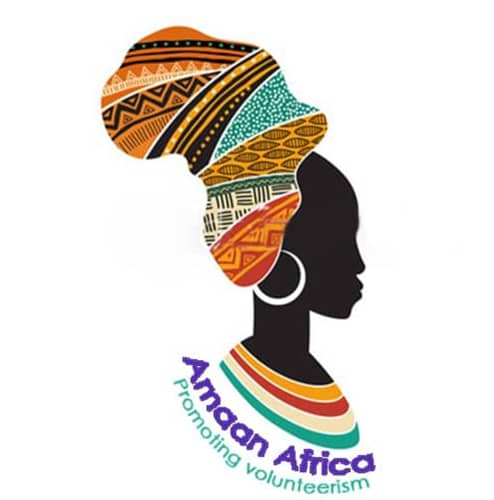
Amaan Africa Donation Accounts
If YOU are IN for the SDGs like we are, Partner for the Goals today. Contact – amaanafrica5@gmail.com
We are on a mission for 10,000 IMPACT by 2030, Your kind Donations will enable us achieve this BIG DREAM!!!
𝑷𝑨𝒀𝑷𝑨𝑳
𝒂𝒎𝒂𝒂𝒏𝒅𝒊𝒈𝒊𝒕𝒂𝒍𝒕𝒄@𝒈𝒎𝒂𝒊𝒍.𝒄𝒐𝒎
𝑴𝑻𝑵 𝑴𝑶𝑴𝑶
𝑵𝑨𝑴𝑬: 𝑨𝑺𝑯𝑼 𝑨𝒀𝑬𝑴 𝑬𝑷𝑺𝑬 𝑵𝑲𝑼𝑴𝑩𝑬 𝑴𝑨𝑼𝑹𝑬𝑬𝑵 𝑨𝑲𝑶𝑹𝑺𝑶𝑵𝑮
𝑵𝑼𝑴𝑩𝑬𝑹: +237 675 544 686
𝑼𝑩𝑨 𝑩𝑨𝑵𝑲 𝑫𝑬𝑻𝑨𝑰𝑳𝑺
𝑩𝒂𝒏𝒌 𝑵𝒂𝒎𝒆: 𝑼𝑵𝑰𝑻𝑬𝑫 𝑩𝑨𝑵𝑲 𝑭𝑶𝑹 𝑨𝑭𝑹𝑰𝑪𝑨 (𝑼𝑩𝑨)
𝑨𝒄𝒄𝒐𝒖𝒏𝒕 𝒏𝒂𝒎𝒆: 𝑨𝒎𝒂𝒂𝒏 𝑨𝒇𝒓𝒊𝒄𝒂 𝑨𝒔𝒔𝒐𝒄𝒊𝒂𝒕𝒊𝒐𝒏
𝑩𝒂𝒏𝒌 𝑺𝑾𝑰𝑭𝑻 𝑪𝒐𝒅𝒆: 𝑼𝑵𝑨𝑭𝑪𝑴𝑪𝑿 𝑩𝒂𝒏𝒌 𝑨𝒄𝒄𝒐𝒖𝒏𝒕 𝑵𝒖𝒎𝒃𝒆𝒓 : 𝑪𝑴21 10033 05208 08031000132 70
𝑨𝒅𝒅𝒓𝒆𝒔𝒔 :𝑨𝒎𝒂𝒂𝒏 𝑨𝒇𝒓𝒊𝒄𝒂 , 𝑪𝒂𝒎𝒆𝒓𝒐𝒐𝒏
Do you like this blog article? Let us serve your content needs with Amaan Digital services. Amaan Digital is a service provider for Copywriting, Content marketing, Digital marketing, graphic design, community management, virtual assistant ready to take you from ideation to the market , let us know your needs.
Follow this link to HIRE a service on WhatsApp: https://wa.me/c/237678814113
THANK YOU FOR READING
HASSANA MARYAM
GBV OFFICER/ SDG BLOGGER
Amaan Africa, CAMEROON
